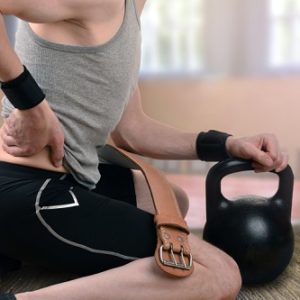How Can You Detect a Sprain or Strain?
Signs of Sprains or Strains Are Very Similar
The signs of most sprains or strains are very similar: bruising, pain and inflammation, at the injured area. Depending on the severity of the sprain or strain, the pain may be mild to severe.
The more severe the sprain or strain, the more difficult it is to use the affected area. Having a mild ankle sprain, someone may just favor that ankle slightly, while a more severe ankle sprain may cause much more pain and make it impossible to walk.
Scale of I to III
Sprain function analysis is rated from a scale of I to III:
- Grade I is a very mild tear or stretching of the ligament, with little to no instability in the joint.
- Grade II is a more of an incomplete tear.
- Grade III is a ruptured or completely torn ligament. This feels like a broken bone, but is not, and it is often impossible to put weight on the joint or use the affected limb.
X-ray Determines the Degree of Severity of the Strain or Sprain
Most people with mild strains and sprains can treat these injuries simply at home with the use of the RICE method of care. Be sure to visit a Doctor for more severe sprains and strains. An X-ray, or other testing, may be used to determine the degree of severity of the strain or sprain.
Exercises with an Elite Personal Trainer Will Improve Rehabilitation
If there is no fracture, additional treatment, such as an ankle cast and/or crutches may be required for a severe ankle sprain. In some severe cases, surgery is necessary to repair the torn ligament or tendon. Specific exercises with an elite personal trainer will improve rehabilitation.
Pain and swelling are usually the best indicators of how severe a strain or sprain is, however, this is not always the case. Some injuries, like Achilles tendon tears, may have mild pain at first, but are actually more severe. If the pain and swelling does to subside within 72 hours, or if your symptoms actually get worse, see a doctor.
Sprains and Strains Treatment
The best care for sprains and strains is known as RICE therapy. RICE stands for:
Rest: Not having weight on the injured area (this includes no lifting with an affected wrist or elbow) for 24-48 hours, to guard against aggravating the injury further. If you cannot put weight on an injured knee or ankle, see your doctor.
Compression: Wrap an injured wrist, ankle, knee or elbow in an elastic bandage, or buy a compression sleeve at any drug store. Similar to ice, compression helps to decrease swelling.
Elevation: Place the injured area on a pillow and elevate it above the level of your heart. By doing this you keep fluid from collecting in the area and decrease swelling.
RICE therapy is very important during the first 24-72 hours after a strain or sprain occurs. During this time, you can also take medication to alleviate pain.
When your pain and swelling subsides, decrease the RICE therapy, and apply the ice compression less frequently (often at the end of the day, as pain and swelling tend to flare up after use).
Rehabilitation
Rehabilitation specialists note that many people are either often too eager and rush back into athletic activities after a sprain or strain, or rest the injured area too long. When you do too much too soon, you can re-injure the area. Conversely if you stay immobile, the formed scar tissue can lead to impaired mobility. It is best to pursue a program of gradual rehabilitation with an elite personal trainer. Your rehab specialist can recommend certain exercises that can help you get back to your normal activities at a safe measured pace.
Expect Some Discomfort During Rehabilitation
Expect some discomfort during rehabilitation, but a sudden flare-up of severe pain is a signal to take things more cautiously. Healing speed depends a lot on the individual, but for most mild to moderate strains and sprains, expect to regain full mobility within 3 – 8 weeks. More severe injuries for a full recovery can take months.
Having great stability and balance is the key in avoiding any ankle sprains according to research found in the Journal of Medicine & Science in Sports.
Their findings stated that volunteers who performed better at the balance test, are less likely to experience an ankle sprain. Volunteers who showed a history of ankle sprains were twice as likely to experience a sprain.
When preventing injuries, personal trainers suggest great balance and stability are crucial in both your training indoors and outdoors. Colder days often leave us exercising less and over icy or snowy surfaces.
See Infofit’s principle Andre Noel Potvin demonstrate these terrific, yet simple exercises that will keep you sure footed and improve your balance. All designed to prevent any future ankle sprains.



